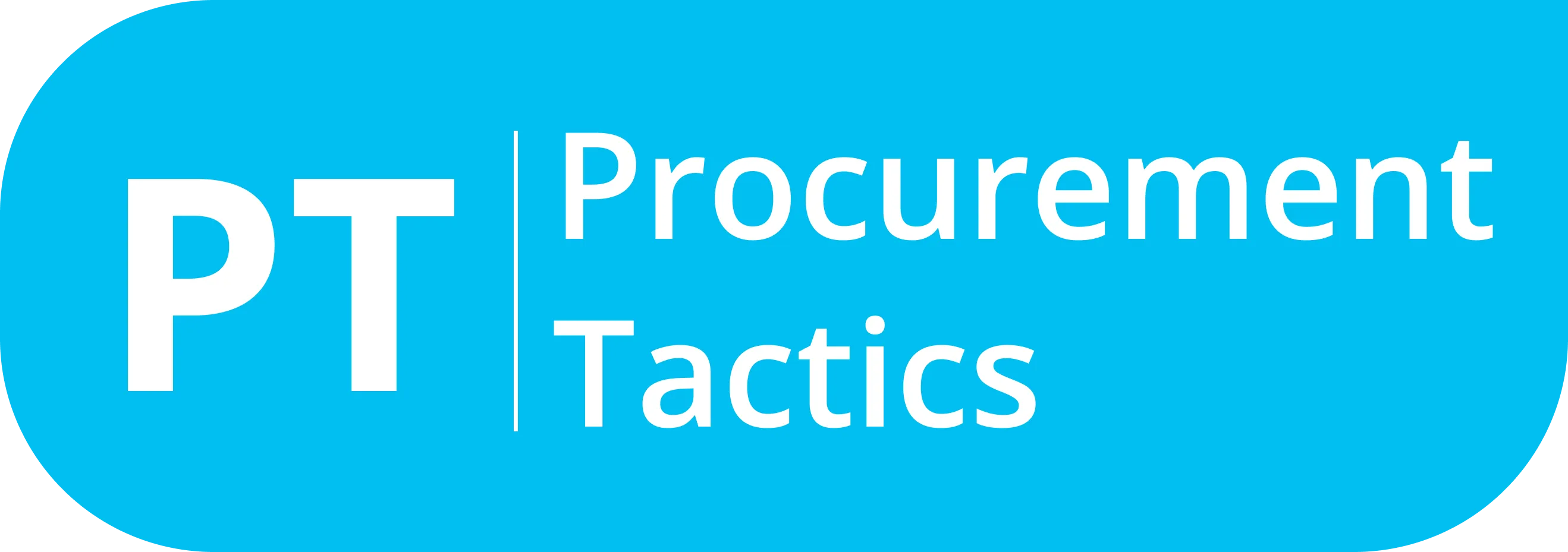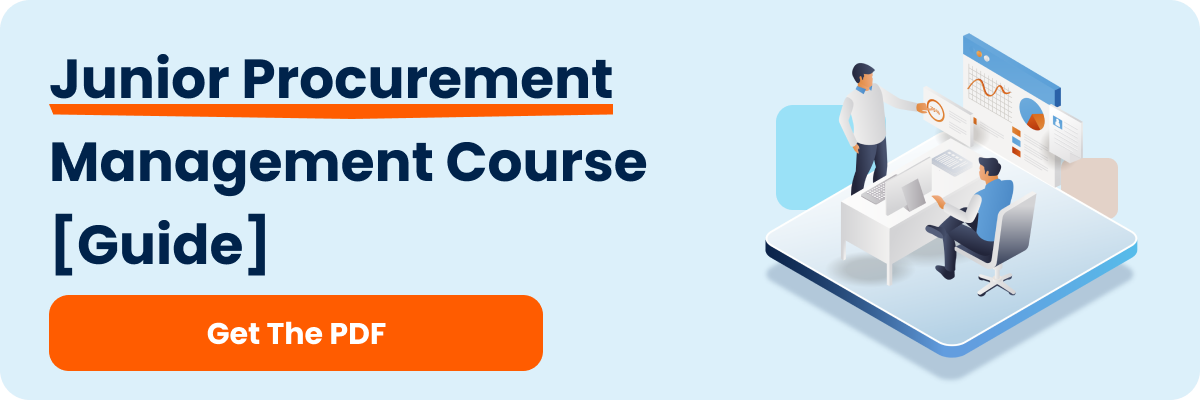Written by Marijn Overvest | Reviewed by Sjoerd Goedhart | Fact Checked by Ruud Emonds | Our editorial policy
Procurement Organization Structure — The Ultimate Guide of 2026

As taught in the Value Chain Analysis Course / ★★★★★ 4.9 rating
Table of contents
- Procurement Organization Structure
- Roles in a Procurement Organization Structure
- Advantages and Disadvantages
- Factors to Consider
- Examples of How to Consider Procurement Structure
- Challenges and Solutions
- Procurement roles overview
- Types of a Procurement Organization Structure
- Essential Skills
- CEO Thoughts
- Conclusion
- Frequently asked questions
How can procurement teams structure their organization?
- You can structure your organization based on size, industry, complexity, and strategy. One of the three models you can adopt is centralized procurement, where a single team handles all purchasing, ensuring consistency, cost savings, and strong supplier management.
- In a decentralized procurement, individual business units or locations handle their procurement, allowing for flexibility and faster decision-making based on specific needs.
- Hybrid procurement is a mix of centralized and decentralized approaches, where strategic sourcing is managed centrally, but operational purchases are handled locally for efficiency.
What is a Procurement Organization Structure?

A Procurement Organization Structure defines how a company arranges its procurement function to effectively acquire goods and services.
This framework outlines the roles, responsibilities, reporting lines, and processes involved in procurement activities.
It helps ensure that purchasing decisions are made efficiently, cost-effectively, and in alignment with overall business objectives.
The structure can be organized in various ways—centralized, decentralized, or hybrid—depending on the company’s size, industry, and strategic needs.
By establishing a clear procurement organization structure, companies can streamline their purchasing processes, improve communication between departments (such as procurement, finance, and operations), manage risks more effectively, and ultimately achieve better value from their procurement efforts.
Roles in a Procurement Organization Structure
Depending on a company’s size and complexity, different positions are assigned at various levels (e.g., junior, senior, advisory, or strategic) to handle specific tasks within procurement. Common roles include:
- Category Manager: Focuses on specific categories of spend (e.g., IT equipment, raw materials) to leverage economies of scale, maintain quality standards, and negotiate favorable terms.
- Sourcing Advisor: Provides expert guidance on supplier selection, contract management, and sourcing best practices.
- Strategic Buyer: Handles high-level negotiations and long-term supplier relationships, aligning procurement activities with the company’s strategic objectives.
- Tactical Buyer: Manages day-to-day purchasing needs and executes routine orders while adhering to overall procurement policies.
- Procurement Analyst: Analyzes procurement data (such as spend analysis, supplier performance) to identify cost-saving opportunities and process improvements.
- Procurement Manager: Oversees the entire procurement function, ensuring that all processes, policies, and strategies are effectively implemented.
These roles can be distributed differently in centralized, decentralized, or hybrid structures. For instance, in a centralized model, you might have a core team of Category Managers and Strategic Buyers, while in a decentralized model, multiple Tactical Buyers operate independently across regions. A hybrid approach may feature a centralized team for strategic tasks (e.g., complex negotiations) alongside decentralized roles for local purchasing and immediate operational needs.
Roles in a Procurement Organization Structure
Depending on a company’s size and complexity, different positions are assigned at various levels (e.g., junior, senior, advisory, or strategic) to handle specific tasks within procurement. Common roles include:
- Category Manager: Focuses on specific categories of spend (e.g., IT equipment, raw materials) to leverage economies of scale, maintain quality standards, and negotiate favorable terms.
- Sourcing Advisor: Provides expert guidance on supplier selection, contract management, and sourcing best practices.
- Strategic Buyer: Handles high-level negotiations and long-term supplier relationships, aligning procurement activities with the company’s strategic objectives.
- Tactical Buyer: Manages day-to-day purchasing needs and executes routine orders while adhering to overall procurement policies.
- Procurement Analyst: Analyzes procurement data (such as spend analysis, supplier performance) to identify cost-saving opportunities and process improvements.
- Procurement Manager: Oversees the entire procurement function, ensuring that all processes, policies, and strategies are effectively implemented.
These roles can be distributed differently in centralized, decentralized, or hybrid structures. For instance, in a centralized model, you might have a core team of Category Managers and Strategic Buyers, while in a decentralized model, multiple Tactical Buyers operate independently across regions. A hybrid approach may feature a centralized team for strategic tasks (e.g., complex negotiations) alongside decentralized roles for local purchasing and immediate operational needs.

Advantages and Disadvantages of Different Structures
Factors to Consider
When choosing a procurement organization structure, companies should consider:
1. Company size and geographical reach
Larger or multinational companies may benefit from a centralized or hybrid model to maintain consistency, while smaller or regionally focused organizations might opt for a decentralized approach.
2. Industry dynamics
The pace of change and regulatory requirements in certain industries might demand more agile, decentralized decision-making.
3. Strategic objectives
If cost control and uniformity are top priorities, a centralized structure might be preferred; if local responsiveness is critical, a decentralized model may be more effective.
Examples of How to Consider Procurement Structure
1. Centralized Approach
A multinational manufacturing company implements a centralized procurement structure to negotiate global contracts and standardize purchasing policies, resulting in significant cost savings and consistency across all regions.
2. Decentralized Approach
A national retail chain uses a decentralized model where regional managers handle procurement locally. This flexibility allows the company to adapt quickly to local market trends and customer preferences.
3. Hybrid Approach
A technology conglomerate adopts a hybrid model, centralizing strategic decision-making and overall policy development while granting regional teams the authority to adapt procurement practices to meet local market needs. This balance ensures both efficiency and responsiveness.
Pro Tip: When designing your procurement structure, don’t just ask, “Centralized or decentralized?” Ask, “Where is the real value created in our value chain—and how can procurement best support it?” Sometimes it’s less about structure and more about aligning procurement’s influence where it has the most strategic impact.
⭢ The Value Chain Analysis Course will show you exactly how to map procurement’s role across your value chain—so you structure your team around value, not just convenience.
Challenges and Solutions
Implementing or transitioning to a new procurement organization structure can present several challenges, such as:
- Resistance to Change: Employees may be hesitant to adopt new processes.
Solution: Implement change management programs and clear communication strategies. - Coordination Issues: Aligning centralized policies with decentralized execution can be complex.
Solution: Invest in collaborative technology platforms and establish clear reporting lines. - Maintaining Consistency: Ensuring that decentralized units adhere to overall strategic objectives might be difficult.
Solution: Regular audits, performance reviews, and training sessions can help maintain alignment.
By carefully evaluating these factors and implementing tailored solutions, companies can design a procurement organization structure that effectively supports their business goals and drives overall efficiency.
Procurement Roles Overview
Click on a role to learn more
Types of a Procurement Organization Structure
A procurement organization structure differs from one company to another.
The difference depends on their specific procurement needs and strategies in implementation.
Finding the necessary structure for your company is crucial to avoid issues and problems due to incompatibility. Below are three procurement organization structures to fit your company composition:
1. Centralized Procurement Structure
This procurement structure focuses on a central procurement entity that manages the company’s procurement activities.
It ensures a consistent and efficient process development and activity flow within the company’s operations.
A Central procurement structure possesses the authority to make informed decisions on behalf of other departments.
This centralization streamlines procurement operations and leverages the singular authority to negotiate with suppliers and maximize economies of scale.
A centralized procurement structure works for companies that must focus on developing their operations or start-up companies that need to build a foundation.
2. Decentralized Procurement Structure
A decentralized procurement structure focuses on distributing procurement responsibilities across departments within the company. Each designated department manages procurement operations accordingly.
This process focuses on specializing on each task, offering focus and attention towards special procurement needs.
This structure supports company flexibility and adaptability with market uncertainties and procurement changes.
However, the divided authority of this structure results in reduced power, possible inconsistencies, and communication concerns that can interrupt the procurement process.
3. Hybrid Procurement Structure
This hybrid structure designates specific procurement decisions while maintaining a top authority to approve the process.
It balances authority and autonomy within company operations while ensuring its smooth flow.
Moreover, it aims to capitalize on the value added by this collaborative process, optimizing spending strategies and recognizing cost opportunities.
This process occurs while maintaining departmental responsiveness in procurement scenarios.
A Hybrid procurement structure needs trained and skilled professionals to ensure a smooth flow and to avoid overlapping with each other’s activities.
Essential Skills for a Robust Procurement Organization Structure
Building a robust procurement organization structure requires skilled procurement individuals collaboratively working towards the company’s goals and objectives.
These professionals must understand that a functional procurement structure harmonizes through individuals possessing the necessary skills.
Having these skills is crucial for a procurement organization structure to enact its strategies and ambitious goals for growth and development.
Below are five critical skills to consider when building a procurement organization structure:
1. Strategic Planning
Strategic planning is crucial to stabilize procurement organizations with the company’s goals and objectives. This process involves a comprehensive market forecast, assessing a company’s needs, and consistent strategic development.
This skill helps develop an organizational structure to be competitive in the procurement landscape while promoting growth and development.
Skilled strategic procurement managers are crucial individuals who continuously propel the company with fresh ideas and outstanding innovations.
2. Relationship Management Proficiency
Collaborative relationships establish visibility and competence for companies within the procurement field. Understanding this skill is crucial to maintain competitiveness while securing negotiation deals in the business environment.
Individuals must learn the importance of navigating through relationship building. From finding potential suppliers, finding quality goods and services, and recognizing cost-saving opportunities, managing relationship delivers.
Moreover, maintaining communication and contact with these relationships ensures a sustainable procurement operation.
Finding suitable individuals who can build relationship value and understand partners from a level perspective highly improves procurement operations.
3. Risk Management
Identifying, evaluating, and minimizing risk is a crucial procurement skill to ensure smooth and consistent company operations.
Professionals must understand how market volatility works, how geopolitical issues affect procurement and risks in supplier relationship building.
Professionals must collaboratively work and develop this crucial skill with other departments as it deals with concerns such as identifying supply chain disruptions.
Developing a knack for risk management safeguards a company’s operation while maintaining the smoothness of the process.
4. Technological Adeptness
Current procurement standards and processes heavily rely on data-driven insights and technological advancements to streamline procurement. Professionals must possess savviness in technology.
Professionals should also focus on concepts such as AI in Procurement. They must understand how to integrate these digital advancements to ensure company efficiency.
These skills enable them to leverage modern procurement incorporations such as automation, supplier performance management software, and more.
5. Leadership
Building a robust procurement organization structure requires an individual possessing strong leadership skills and change management.
These procurement professionals must aim to inspire their teams, adapt modern organizational practices, and communicate their vision for innovation to compel others toward success.
Leadership qualities also expand adaptability, flexibility with process adjustments, and continuous personal development. A leader, first and foremost, must develop himself before developing the path of others.
My Thoughts on Building an Efficient Procurement Organization Structure
In building an effective procurement organization structure, you require a holistic approach that focuses on innovating current procurement strategies, improving leadership values, and readily adapting to current procurement trends.
Professionals building this structure must establish clear goals and objectives to guide companies in navigating market changes while optimizing spending and mitigating risks.
Leadership is a crucial skill in creating a collaborative and innovative organizational structure.
Professionals must train in negotiation, manage supplier relationships, and imbibe a sense of commitment with their team members.
Moreover, these professionals should be updated with the current news and trends to adapt to the ever-changing procurement landscape.
Consequently, a procurement leader should also be flexible. It allows them to balance consistently changing procurement regulations and standards.
This skill enables them to manage standards compliance while moving towards a diverse procurement approach.
To build a robust procurement organization structure, one must possess skills in leadership, be flexible, and equip oneself with current procurement trends.
These necessary procurement skills are a must for maintaining company stability and promoting overall growth and development.
It allows a company to become dynamic and adapt to continuous market changes, achieving procurement excellence in the long run.
Conclusion
A procurement organization structure develops a framework for companies to foster efficient and effective procurement operations.
It promotes company communications, collaboration, and strategic decision-making. The structure establishes an organization the company must follow to maintain consistency, avoid risks, and complete company objectives.
Building the procurement organization structure requires skilled professionals who equip themselves with leadership, good relationship skills, and strategic thought.
These skills allow them to navigate structural complexities and effectively apply them within company operations.
This incorporation highlights the value of developing your structure to develop others.
Moving through the vast procurement landscape, companies need adept professionals possessing a holistic value and a sense of visionary direction.
These traits emphasize the importance of a well-built procurement organization structure that promotes growth and stability.
Frequentlyasked questions
What is Procurement Organization Structure?
Procurement Organization Structure/s, or POS, provides the framework where companies base their procurement activities on acquiring goods and services.
Why is Procurement Organization Structure Important?
The stability and order of a procurement organization structure define a company’s operational framework in providing a robust and sustainable procurement operation.
What are the Types of Procurement Organization Structure?
The types of Procurement Organization Structure are Centralized, Decentralized, and Hybrid.
About the author
My name is Marijn Overvest, I’m the founder of Procurement Tactics. I have a deep passion for procurement, and I’ve upskilled over 200 procurement teams from all over the world. When I’m not working, I love running and cycling.






